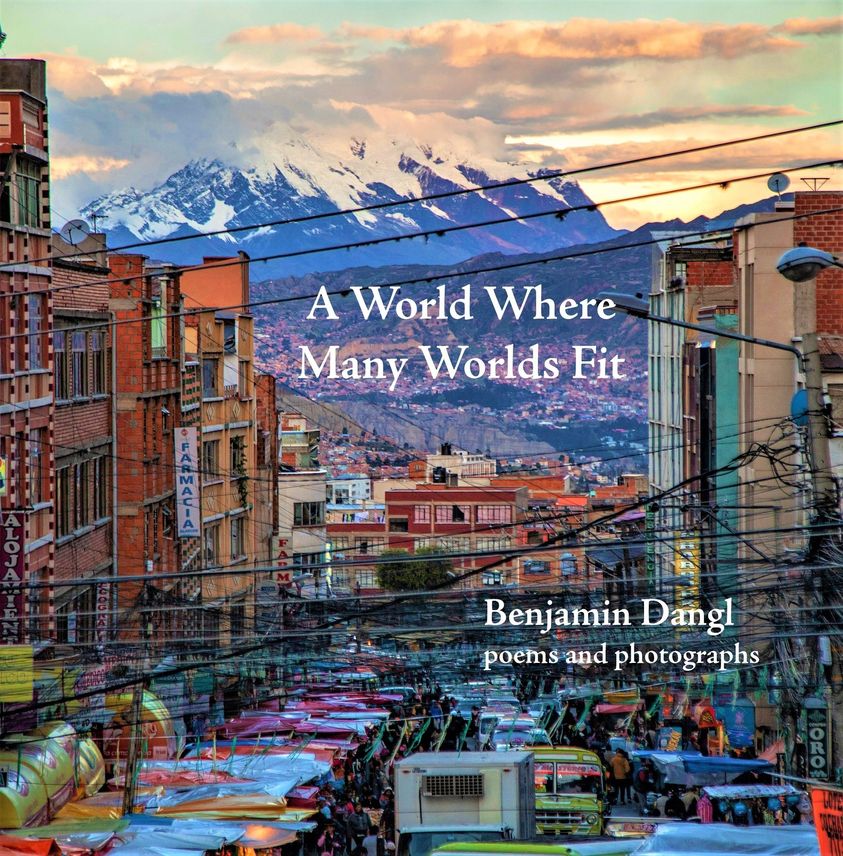Preface to A World Where Many Worlds Fit

Preface from the book A World Where Many Worlds Fit, Published by Fomite Press
By Benjamin Dangl
“In the world we want, everyone fits. We want a world where many worlds fit.” — Subcomandante Marcos, Zapatistas
This book celebrates a world where many worlds fit. It reports from beyond the homogenizing forces of global capitalism, from decolonized street markets, scattered autonomous territories, and peoples’ orchestras of the road. It records my attempts to distill what I saw in travels around the world while working as a journalist.
Awed by these streetscapes at dawn, these bus rides under Andean stars, these revolutions and defeats, I wanted to deepen my experience of them by writing it down. Bearing witness was a way of moving through the world, rendering a scene in words the way a camera shutter catches light.
The photography here is a part of that same process of seeing and gathering. The snapshots in these pages are organized to complement the words. They do not always depict the same location as the poems, but convey a similar feeling through visual poetry. Like the trains and taxis described throughout these pages, the words and photos are a means of transportation, providing windows through which to see.
As I created the writing and photography collected in this book over a twenty-year period, I also worked as a journalist, reporting for social justice, following causes and movements, and investigating moments of inequality and liberation. This work resulted in three books and hundreds of articles published on Indigenous movements and politics in the Andes, working class struggles in the global south, leftist political victories in Latin America, US imperialism, women’s rights, and environmental justice.
Following those stories took me to Amazonian rivers polluted by Cargill pesticides, rickshaw union efforts in India, and popular uprisings in Bolivia. As I conducted research and interviewed those affected for my nonfiction work, I also recorded the most compelling scenes from these travels in hundreds of personal notebooks. What you have here is a revised selection from those thousands of pages.
This book is a journey in which, following the spirit of the Zapatista saying, everything fits. The poems and photographs are organized in a way to conjure the experience of traveling through worlds of cities, streets, wildernesses, and waterways:
Part I: Between Two Worlds: Departures and Arrivals explores the vivid newness of seeing a country for the first time, the lights of the city from the descending plane, the night scenes along the train tracks. It reaches into the potent moments between leaving and landing, of arriving and knowing a new place: the engine of travel.
Part II: The Organismal City: Urban Ecosystems brings the reader into mountain city markets, the bowels and roaming dogs of urban spaces, a Havana New Year, an Andean carnival. Cities are concrete ecosystems containing many organismal worlds unto themselves, each with their own ways of breathing, moving, digesting.
The city gives way to Part III: Streetscapes: Where the Waves Gather, where revolutionaries organize their barricades, where fireworks ricochet in Delhi, and where bankers sing of Che Guevara while kids search for dinner in garbage cans. Worlds converge and celebrate in the street, where the private becomes public, where wanderers and workers, street vendors and outlaws, families and drunks gather, finding a common home and passage.
The bus follows the river to Part IV: Riding Through the Wilderness: On the Edges of Maps, on jungle roads past tuba players at dawn, coca farmers, weapon vendors and herds of camels, cumbia music echoing toward jagged mountain horizons. The bus window is the traveler’s eternal companion, offering rolling views and fleeting insights into rural, roadside worlds.
The journey continues through Part V: Water Worlds: Seas of Possibility, where fishermen play the puppet strings of their nets, waterfalls catch on fire at night, bullet holes by the river tell of coups and uprisings, and funeral pyres light the shores of the Ganges. Bodies of water evoke the possibility of travel, their horizons and ports a reminder of the vastness of the world, their seas a metaphor for movement.
The book concludes with Part VI: Homeward: The Road is a Hammock for Our Hearts, where a lightning storm in mid-flight, Valentine’s Day in Paraguay, and a tropical ferry ride embody the sweet weariness of finding home in the journey, across the invisible maps of a world of many worlds.